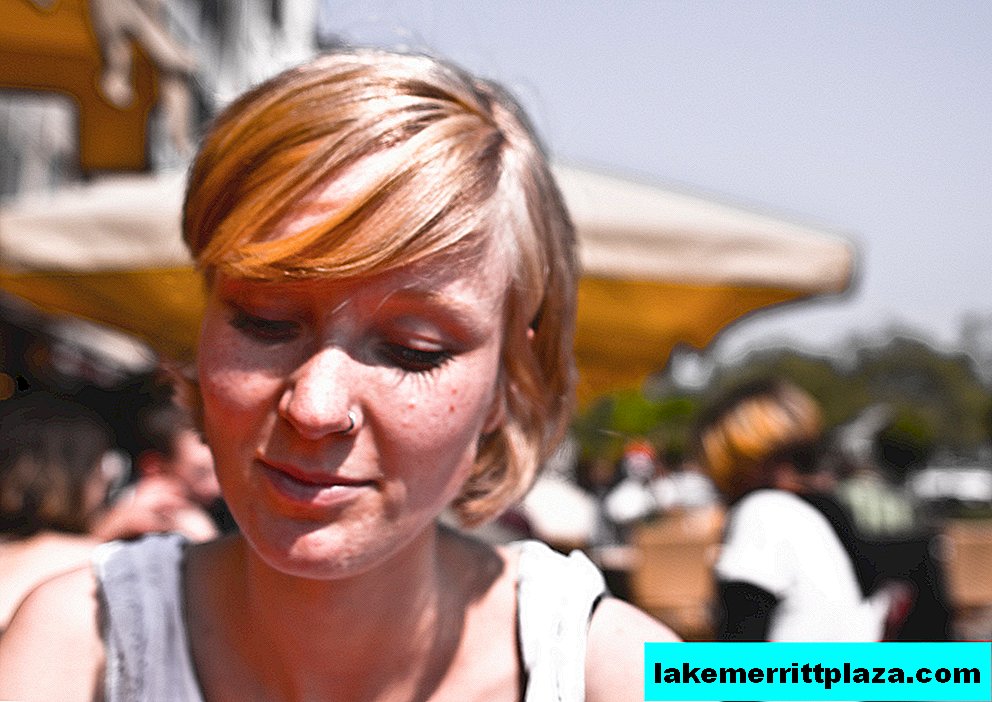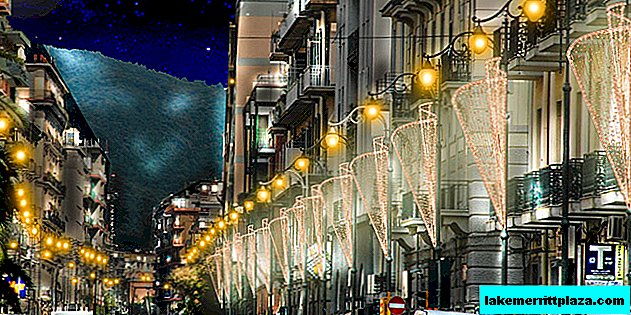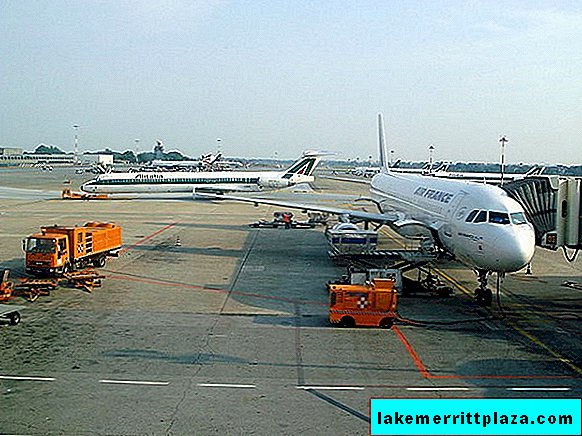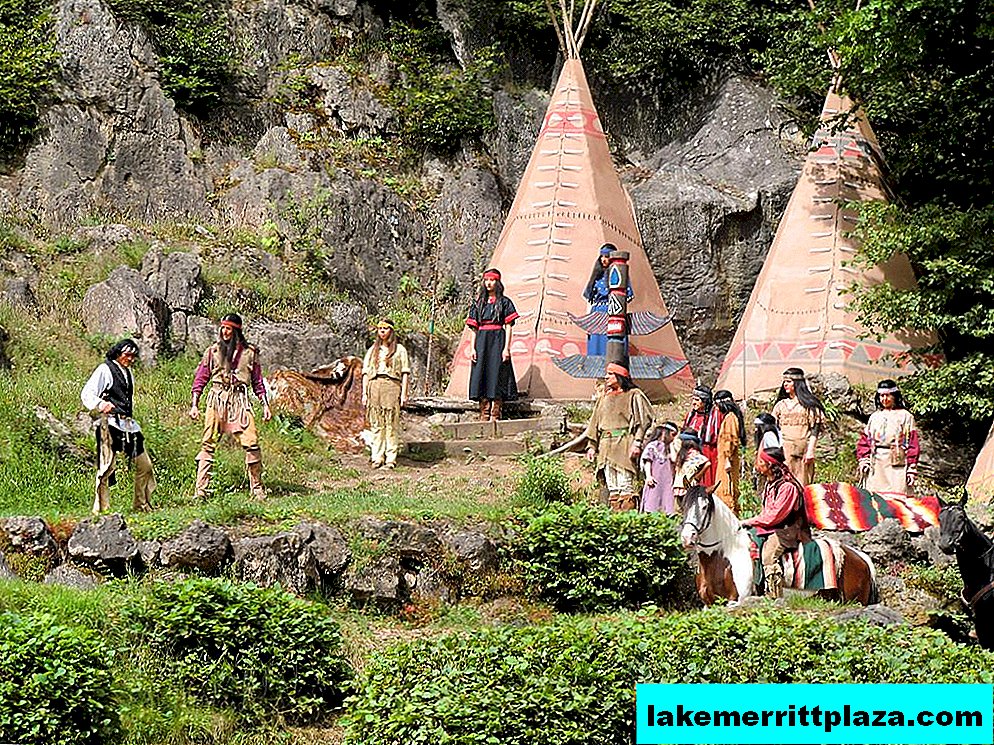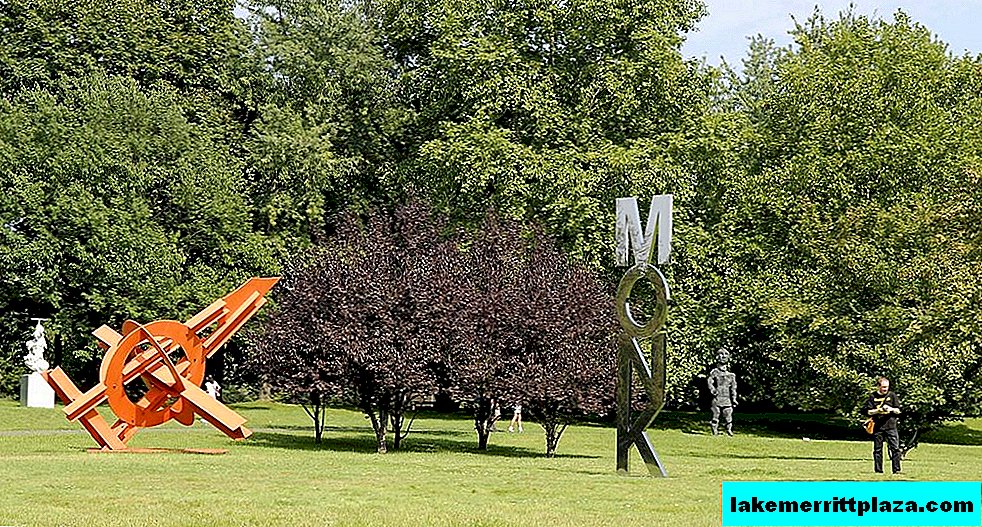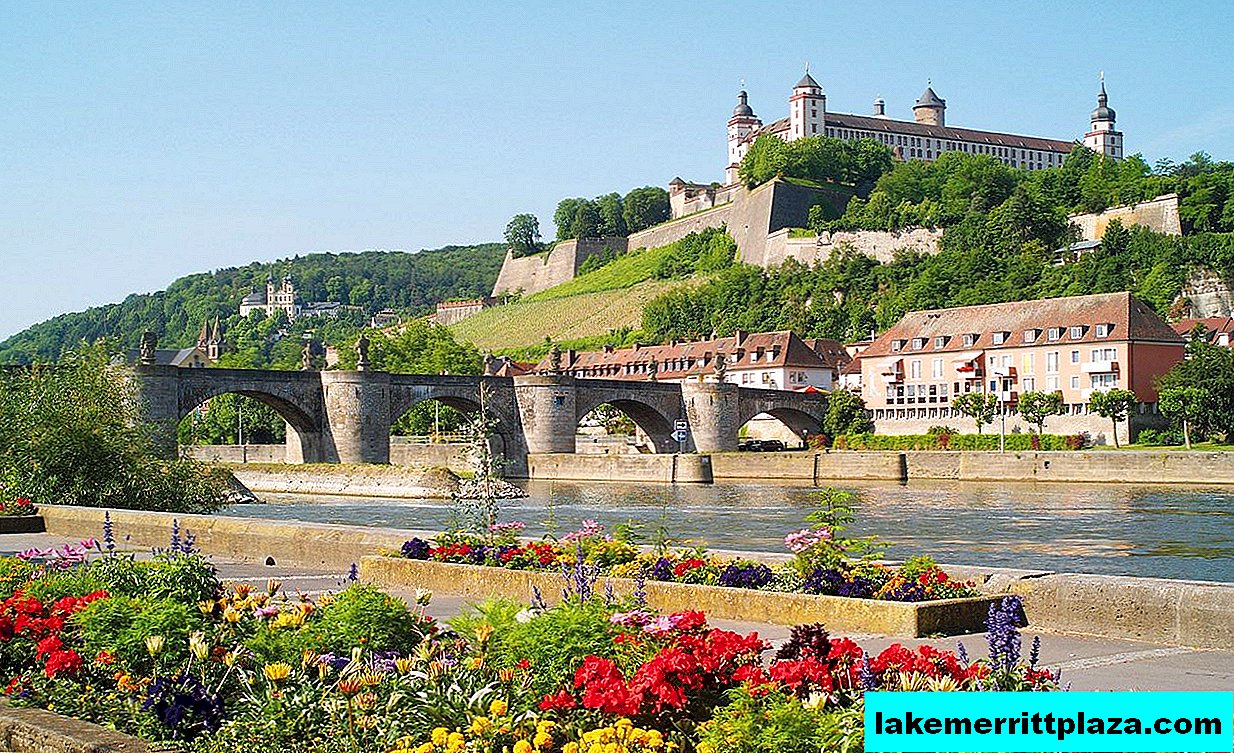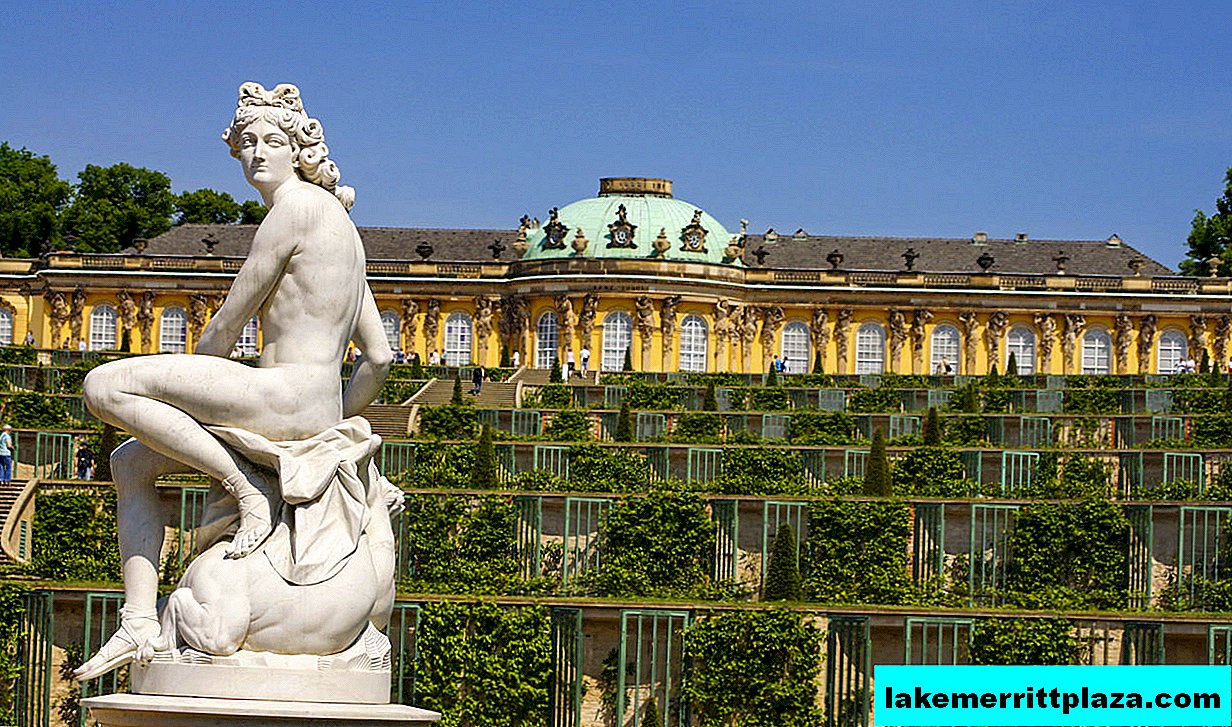The Gran Sasso and Monti della Laga (Parco Nazionale del Gran Sasso e Monti della Laga) is one of three national parks that make up Europe’s green lungs. So called Abruzzo - a country of parks and reserves: 4 parks (3 national and one regional), 38 reserves has a small region.
Gran Sasso Park is a little over 20 years old; it covers 150 thousand hectares of protected areas of natural and cultural value. Part of the territory is a field of scientific research, another is open for tourists. The peaks of the Apennines, forests and colorful valleys, rivers with bizarre waterfalls, picturesque lakes, mountain settlements are waiting for everyone who wants to know Italy in its pristine beauty.

Nature
Earthquakes are called in Abruzzo one of the local attractions. For centuries, they accompanied the history of the region - this is due to the peculiarity of the Apennine mountain system.
- We recommend reading about earthquakes in Italy
Seismic activity
The Gran Sasso and Monti della Laga National Park spans three mountain ranges: Gran Sasso d'Italia, Monti della Laga and the Monti Gemelli mountain range. They belong to the system of the Apennine mountains, which is one of the youngest in the world, therefore, seismic activity is very high here.
The divergence of the African and Eurasian tectonic plates at the bottom of the Tyrrhenian Sea forces Italy to move from west to east at a speed of 24 mm per year.
The Adriatic tectonic microlith moves in the opposite direction. Scientists explain its “creep” under the Apennine mountains as the cause of the 2009 earthquake that destroyed L'Aquila, the capital of the Abruzzo region. Seismic activity and heavy snowfall at the beginning of 2017 caused an avalanche to descend from the slopes of Corno Grande (Corno Grande -2912 m) and a tragedy with the Rigopiano hotel in the Farindola valley at the foot of the mountain.
Tremors, cracks and tears remind people that Nature remains the main creator of the region.
Ecosystems

In the park "Gran Sasso and Monti della Laga" plants and animals of almost all natural areas of Europe are presented: from Mediterranean to Arctic.
Broad-leaved forests of oak, chestnuts, beech with thickets of large blueberries are replaced by alpine meadows with rare species of edelweiss, violets, crocuses and orchids.
- Inspire fabulous photos of Abruzzo
The pride of the fauna of the park is the Apennine chamois (Camoscio appenninico), 30-40 individuals of the Apennine wolf, the main food of which are wild boars; ever-growing populations of deer and roe deer, as well as rare specimens of the Martian bear. High in the mountains you can meet the Orsini viper and the alpine newt. The nature of each of the mountain ranges that make up the park has its own characteristics.

Monti Dzhemeli ridge
Monti-Jemelie Range - Double Mountains is located in the northeast of the National Park in the province of Teramo, in the vicinity of Valle Castellana. The mountains are composed of limestone and are interesting karst caves.
Monti della Laga massif
The Monti della Laga mountain range occupies the northern sector of the park, located in the province of Teramo, as well as in the regions of Marche and Latio. These mountains consist of marl-sand rocks, have soft rounded peaks overgrown with deciduous forests. Monti della Laga is the land of rivers, waterfalls and lakes.
Here, at an altitude of 1300 m, the man-made lake Lago Di Campotosto spread widely - very beautiful and very cold.
In winter, huge flocks of coots gather in the ice-holes that are not shackled by frost. In spring, you can observe the rare white heron and its lightning-fast maneuvers for fishing. At the beginning of summer, loving dances on the lake are held by crested ducks svassi - a rare natural spectacle in its fascination.
Massif Gran Sasso
Gran Sasso is the main and most powerful array of the National Park. Its peaks: Corno Grande (2912 m), Corno Piccolo (2655 m), Pizzo Intermesoli (2635 m), are composed of limestone and dolomites and dominate the entire area. This is the habitat of golden eagles and eagles, relict reptiles of the ice age, trails of climbers and climbers lead to the peaks.
On the slopes of Mount Corno Grande, which translates as "Big Horn", is the most southern glacier in Europe, Calderone (Ghiacciaio del Calderone). Lake Sofia, lying 250 m below the glacier, is fed by its meltwater and is gradually increasing in size.
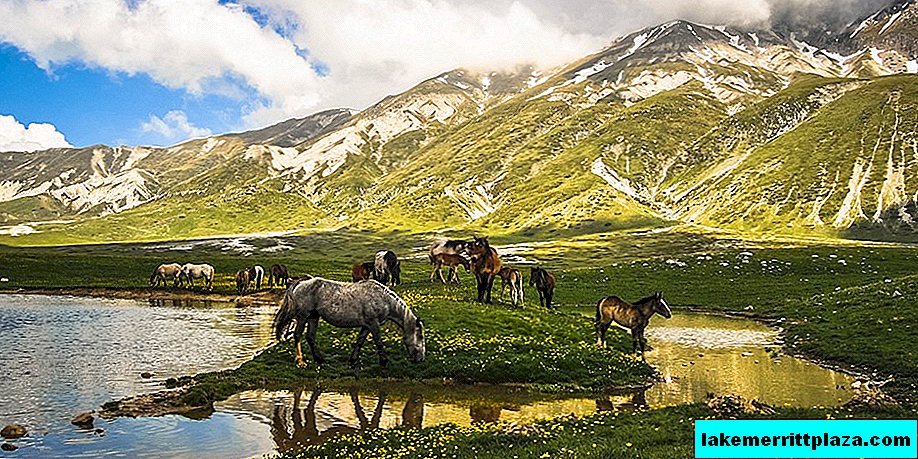
To the east of the dominant ridge is the Campo Imperatore plateau. These are alpine meadows, pastures for horse herds, cow and sheep herds. It is always cool and windy, even if asphalt melts at the foot of the heat. In winter, skiers climb the plateau by cable car, in the summer it is available for tourists.
Routes
The entire territory of the National Park is divided into 11 tourist districts, 7 of which cover the Gran Sasso massif.
Assergi
The administrative center of the protected area is located in the town of Assergi and is located in the restored building of the Franciscan Monastery. You can get information about routes, apply for a visit to the park, and view the museum of archaeological excavations at Via del Convento, 1, 67010 Assergi AQ, Italy.
- In Assergi, the tunnel under the Apennines begins, connecting Rome with the Adriatic.
- In one of the branches of the tunnel are the experimental halls of the National Laboratory of Gran Sasso. Under the protection of 1,400 kilometers of mountains, scientists at the Institute of Nuclear Physics are conducting experiments with ultrafine forms of matter.
- The cable car connects Assergi with the Hotel Campo Imperiale, where in 1943 the fascist scout Otto Skorzeny conducted a fantastic operation "Oak" to abduct Duce Mussolini.
- From Assergi, a journey begins in the highest mountainous tourist district of the park.
Distretto alte vette

“High Peaks Area” - this is how the name of the travel zone can be translated from Italian. The surroundings of Korno Grande Peak are cliffs, abysses, ancient moraines that attract climbers and climbers here. The routes marked with red arrows climb to the top of the Apennine in full gear with carbines and ropes. Green arrow routes are covered without insurance, but with a good dose of adrenaline.
Naturalists call the Campo di Emperor Plateau the "second Tibet" - its landscapes are so similar to the nature of the highest mountains in the world. In summer, these places are full of equipment: from cars to bicycles. Some bring horses in trailers and travel on the plateau to them. In places of picnics hundreds of people gather to cook arrostychini (kebabs) and salsa (sausage from minced meat) and fully enjoy an Abruzzo holiday.
Distretto strada maestra
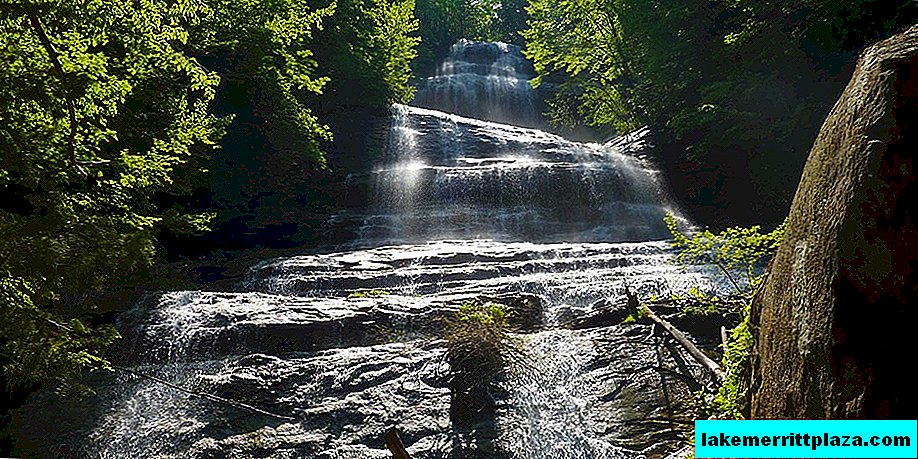
Strada Maestra Tourist District - the “main road” is located around the S80 state road. She follows the path of the legendary Cecilii - the road from Ancient Rome to Teramo and L'Aquila. Here, in the heart of the National Park, there are two massifs: the harsh steep Gran Sasso and soft, rich in the waters of Monti della Laga. Popular in the area is the direction to Lake Lago di Campotosto: its 40-kilometer coastline is equipped with hiking trails and bicycle paths, picnic sites and campsites.
Fishing, windsurfing, sailing, panoramic photos of sunrises and sunsets - everyone will find an occupation to their taste.
In the Strada Maestra district there are also routes: "70 km in 7 days" with an overview of the most beautiful landscapes of the park, ethnographic and archaeological paths, an overview of the Baroque monuments, a trip through the country of mills.
Useful information
- In all districts of the National Park, 79 hiking trails of varying complexity have been developed. Information about each of them can be obtained on the official website www.gransassolagapark.it;
- Seven horse trails are described at this address.
- The scheme of the circular equestrian route 300 km long, as well as the places of parking and picnics can be studied according to the scheme.
- A new direction in the park is the development of cycling routes
- On the territory of the park, it is necessary to observe the places of permitted parking. Camping Addresses Stops elsewhere prohibited.
- You can make a halt and make a fire for cooking only in specially equipped places. Their location within each province can be found here.
Hotels
To get to know the Park, you can choose any convenient settlement as a starting point: hotels for agritourism, bed and breakfast shelters, apartments and rooms in private houses are everywhere.
Sextantio albergo diffuso

Sextantio Albergo Diffuso is located at an altitude of 1250 meters in the National Park. The village is the medieval village of San Stefano. The hotel combines the features of a historic building with modern amenities. The restaurant serves local cuisine for dinner. Climbing, hiking and horseback riding, hang gliding are available.
Agriturismo statale 17

Agriturismo Statale 17 is 1 km from the center of Poggio Picenze and 11 km from L'Aquila. There is a kitchen, free parking, WiFi. This place is ideal for agritourism.
La Selva dell'Ampolla

La Selva dell'Ampolla is located in the countryside near Civitaquana in the province of Pescara. It offers a kitchen, bathroom, free use of bicycles and parking, and a sweet breakfast is served in the morning.
How to get there
The best option: rent a car - at auto.italy4.me and go on a trip immediately from Rome Fiumicino Airport or Bari Airport.
From Rimini to the Teramo slope: Take the A14 motorway to the Teramo, Giulianova turn; further along the S.S 80 highway.
From Rimini to the slope of L'Aquila: take the A14 motorway until turning onto Pescara Nord, then via Gran Sasso, Penne to Farindola.
From Rome to the slope of L'Aquila: Take Route 24 to turn onto Assergi via Colledara, San Gabriele.
Trains and buses connect Italy's transportation hubs to the provincial centers of Abruzzo. Train timetables can be viewed at Trenitalia.com.
Local bus lines will be delivered from the provincial centers to the park slopes, see the schedule here www.arpaonline.it.
Communicating with the nature of the Gran Sasso and Monti della Laga National Park will surely leave an unforgettable impression of secret Italy and having been here once, you will dream of returning here again and again.


